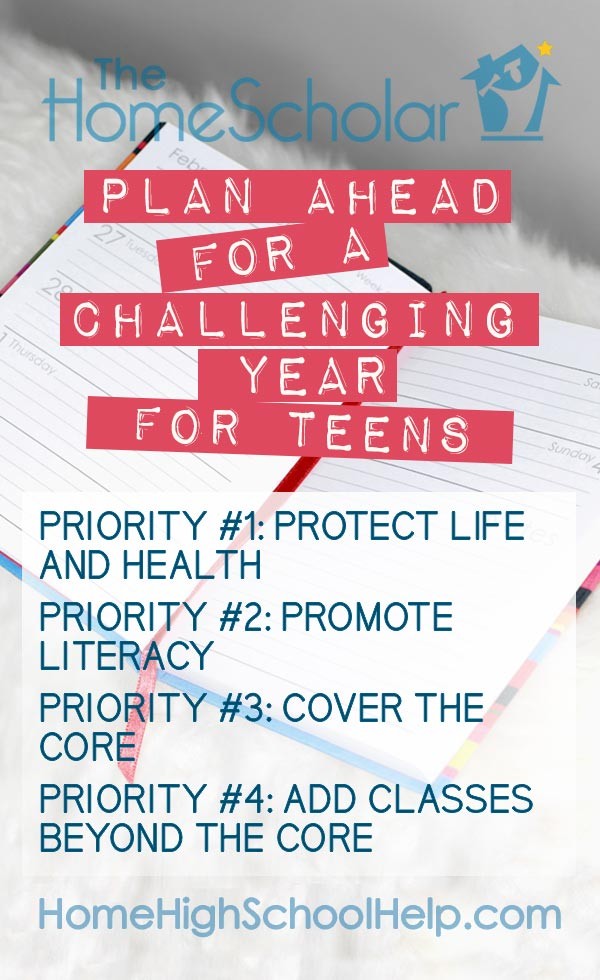Occasionally a teenager will have a health, psychological, or emotional crisis that will make homeschooling seem virtually impossible. I’d love to help you make some reasonable goals that you can modify to meet your needs. When your child’s upcoming homeschool year looks beyond challenging, and you are unsure how to homeschool, this post is for you. I know that sometimes health issues like Lyme disease, cancer, or mono can really bring school to a screeching halt. With no judgment, let’s talk about some options.
Priority 1
Life and health are always the number one priority. In five years, you are NOT going to care if your child completed French, or took a lab science. You will only care that they are healthy and alive, and that you have a close and loving relationship with them.
Collect natural credits when they occur – if they love history, art, or crochet, it’s possible they may earn a credit even while in a serious situation. Thankfully, we can homeschool so the child can learn in peace, without pressure, during a challenging time.
Priority 2
Literacy is the second stage of crisis homeschooling. If your child is surviving, and the immediate life-threatening or life-altering situation has ebbed, it may be time to add literacy skills: reading, writing, and math. It’s as easy as A-B-C.
A. Read with real books. Choose books from my College Bound Reading List
B. Write by doing some journal writing. Journaling keeps writing skills fresh, and it’s good for the child anyway. This is a key ingredient to psychological care anyway, and can help your child cope with and understand almost any crisis they face. This journal can be used later on when health is returned and the child is writing a college application essay. While a crisis is always upsetting, the bright side is that a crisis makes an incredibly compelling college application essay. This book has plenty of writing prompts: Writing Down the Days. And, this little notebook would be great for a journal, because the smaller pages won’t be overwhelming.
C. Math, when possible, can be as simple as a few math problems or as much as a whole math lesson, if the child is healthy enough and able.
Priority 3
Cover the core when you can, when the child is healthy enough to do school work again. Add an English curriculum with more regularly scheduled writing. Add to English and Math some social studies and science. When you have the core covered, that’s all you really need to stay on top of things, at least for one year.
Priority 4
Begin to include the classes that are beyond the core. Add foreign language, fine art, PE, and electives. Look back over the time of crisis, and imagine that it was a time of “forced unschooling.” While it may not be your normal homeschool choice, it’s an equally valid way to learn. Look at what your child has done naturally and scoop up credits where you can. This book may help you identify natural learning and put it on your homeschool transcript. How to Put Fabulous Fun on Your Homeschool Transcript: Convert Natural Learning into High School Credit
You can have a bright future ahead – see my eBook, How to Be a Better Home Educator for encouragement!
Have you been through tough homeschooling times? Share your words of encouragement.







Thank you for the encouragement. Our children’s well being and health are so important, school can be completed slightly slower than the “average” pace if needed, their life needs come first.
Hi Anita!
Exactly! You know your children’s needs best. Lee wants you to trust yourself, because you are the best guidance counselor!
Robin
Assistant to The Homecholar